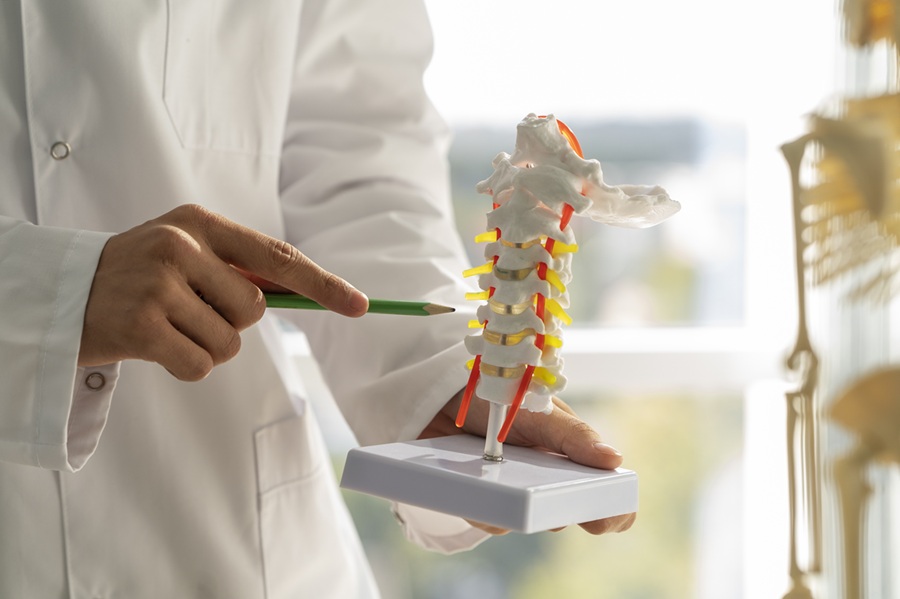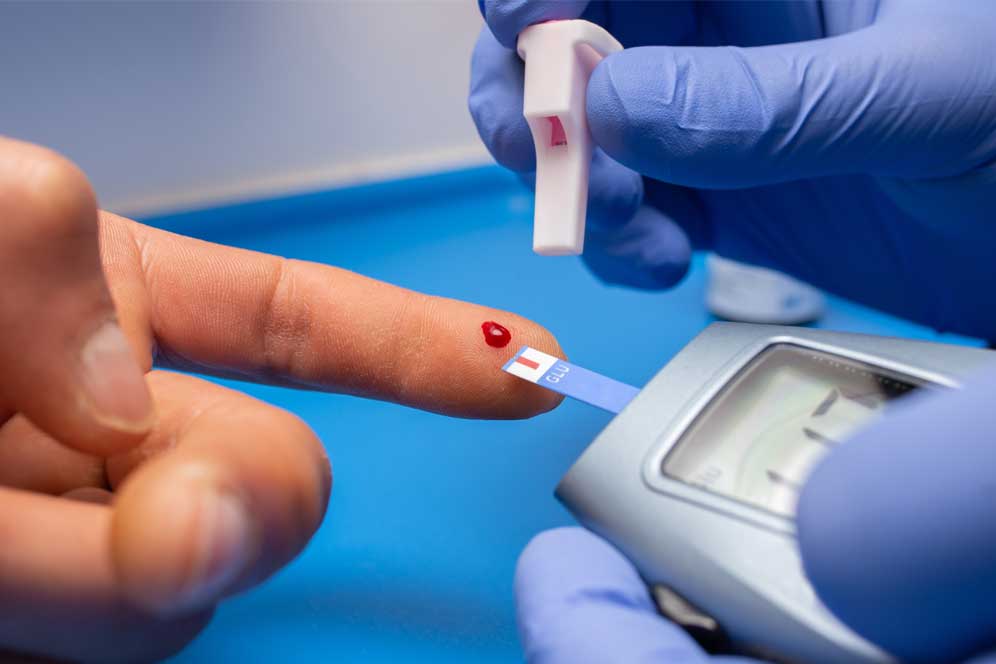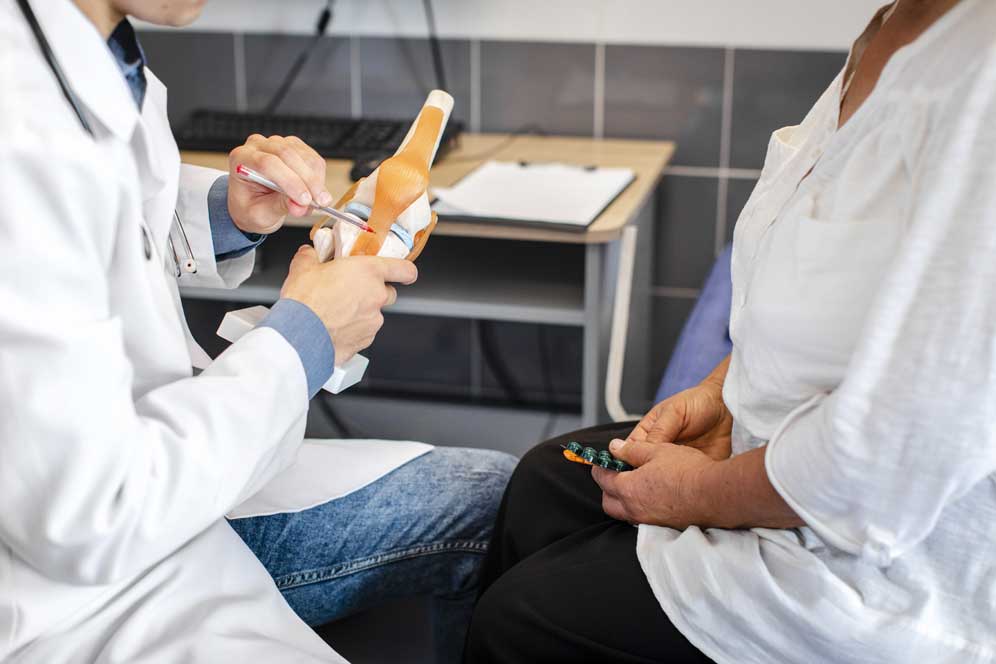
17 Nov 2025
Spinal Cord Injury(SCI): Types, Causes and Symptoms
The spinal cord is the body’s central communication highway — connecting the brain to every organ, limb, and muscle. It transmits signals that control movement, sensation, and reflexes. When this pathway is damaged, the effects can be life-altering. A spinal cord injury (SCI) can lead to partial or complete loss of movement and sensation below the level of injury, depending on its severity.
At Arora Neuro Centre, our experts specialize in diagnosing, treating, and rehabilitating patients with spinal cord injuries through a multidisciplinary approach. Understanding the causes, symptoms, and management of spinal cord injury can empower patients and caregivers to respond promptly and effectively.
What is Spinal Cord Injury?
A spinal cord injury occurs when there is damage to any part of the spinal cord or the nerves at the end of the spinal canal. This damage disrupts the brain’s ability to communicate with the body below the injury site.
Depending on the location and severity, spinal cord injuries can affect mobility, sensory perception, and even autonomic functions such as breathing, bladder control, and blood pressure regulation.
The condition can be traumatic — caused by external physical impact — or non-traumatic, resulting from diseases, infections, or degenerative conditions affecting the spine.
Spinal Cord Injury Classification
Medical professionals classify spinal cord injuries based on the extent of damage and the affected area of the spinal cord. The spinal cord injury classification helps determine treatment options and prognosis.
1. Complete Spinal Cord Injury
A complete spinal cord injury occurs when the spinal cord is fully severed or severely damaged, leading to a total loss of sensory and motor function below the level of injury. Patients typically experience paralysis and lack of sensation in the affected areas.
2. Incomplete Spinal Cord Injury
An incomplete spinal cord injury means that some signals can still travel between the brain and parts of the body below the injury. Patients may retain partial sensation or movement, and the degree of recovery varies from person to person.
What Causes Spinal Cord Injury?
There are several possible causes of spinal cord injuries, broadly divided into traumatic and non-traumatic origins.
1. Traumatic Causes
Traumatic spinal cord injuries occur due to sudden physical impact or force to the spine. Common causes include:
-
Road accidents: The leading cause of spinal injuries globally, often due to high-speed collisions.
-
Falls: Especially among older adults, slips or falls can cause vertebral fractures and cord compression.
-
Sports injuries: High-impact sports like gymnastics, diving, or football can lead to neck or back trauma.
-
Violence: Gunshot or stab wounds may penetrate and damage the spinal cord.
-
Workplace injuries: Heavy lifting or industrial accidents can also cause spinal trauma.
2. Non-Traumatic Causes
Non-traumatic spinal cord injuries develop due to medical conditions that damage spinal tissue or restrict blood flow, such as:
-
Tumors pressing on the spinal cord
-
Infections like tuberculosis or meningitis
-
Inflammatory diseases (multiple sclerosis, transverse myelitis)
-
Degenerative spine conditions (spondylosis or herniated discs)
-
Congenital disorders such as spina bifida
Signs and Symptoms of Spinal Cord Injury
The signs and symptoms of spinal cord injury depend on the injury’s location and severity. Symptoms may appear immediately or develop over time due to swelling or inflammation.
1. Physical Symptoms
-
Loss of movement or paralysis in limbs (tetraplegia or paraplegia)
-
Loss of sensation, including inability to feel heat, cold, or touch
-
Loss of bladder or bowel control
-
Uncontrolled muscle spasms or exaggerated reflexes
-
Difficulty breathing or coughing (especially in injuries near the neck)
2. Secondary Symptoms
-
Chronic pain or burning sensations due to nerve damage
-
Pressure sores from immobility
-
Circulatory issues, including low blood pressure and deep vein thrombosis
-
Changes in sexual function and fertility
-
Depression and anxiety, stemming from physical limitations
Recognizing these symptoms early and seeking prompt medical care can significantly influence the management of spinal cord injury and the overall outcome.
Signs of Recovery from Spinal Cord Injury
Recovery from a spinal cord injury varies widely depending on the injury type, location, and treatment approach. Some of the encouraging signs of recovery from spinal cord injury include:
-
Return of sensation in previously numb areas
-
Gradual muscle movement or twitching below the injury site
-
Improved bladder and bowel control
-
Enhanced breathing capacity and energy levels
-
Better balance and coordination during rehabilitation
Rehabilitation plays a crucial role in maximizing recovery potential. Early and consistent physical therapy, occupational therapy, and psychological support can help regain strength and independence.
Management of Spinal Cord Injury
Comprehensive management of spinal cord injury involves immediate medical stabilization, surgical intervention (if needed), and long-term rehabilitation.
1. Emergency Care
-
Immobilization: The patient’s neck and back are stabilized to prevent further injury.
-
Medication: Corticosteroids may be given within hours to reduce inflammation.
-
Surgery: Urgent decompression or stabilization surgery may be performed to relieve pressure on the spinal cord and realign vertebrae.
2. Hospital and Rehabilitation Care
-
Respiratory Support: For high cervical injuries, ventilatory assistance may be required.
-
Pain Management: Medications and nerve treatments help control chronic pain.
-
Physiotherapy: Regular exercises improve mobility, strength, and posture.
-
Occupational Therapy: Helps patients adapt to daily activities using assistive devices.
-
Psychological Counseling: Addresses emotional challenges, building confidence and resilience.
3. Long-Term Care and Support
-
Adapting living spaces for accessibility (wheelchairs, ramps, adjustable furniture)
-
Continuous follow-up with neurologists and spine specialists
-
Nutritional support for bone and muscle health
-
Preventing complications such as infections or pressure sores
At Arora Neuro Centre, our multidisciplinary team of neurologists, spine surgeons, physiotherapists, and psychologists work together to ensure complete care and rehabilitation for spinal injury patients.
Life After a Spinal Cord Injury
Living with a spinal cord injury requires physical adaptation and emotional strength. Modern medical care, assistive technologies, and rehabilitation strategies allow most patients to lead productive, fulfilling lives.
Many people with incomplete spinal cord injury achieve significant improvement in function with consistent therapy, while those with complete spinal cord injury can still regain independence through customized rehabilitation programs and lifestyle modifications.
Family support and mental well-being are just as important as medical treatment. With awareness, adaptive tools, and specialized care, recovery becomes a journey of rediscovering strength and resilience.
Conclusion
A spinal cord injury may change life suddenly, but it doesn’t have to define it. Understanding what causes spinal cord injury, recognizing the signs and symptoms, and getting early medical intervention can dramatically improve recovery outcomes.
At Arora Neuro Centre, we provide comprehensive care — from emergency treatment to long-term rehabilitation — ensuring every patient gets the best chance at recovery and quality of life.
Recent Blogs
-

We will work with you to develop individualised care plans
Arora Neuro Centre maintains awareness about the vital association between diabetes and neurological health issues where diabetic patients face greater stroke susceptibility.
-

How Diabetes Affects Brain Health: The Hidden Risks
Typically diabetes causes problems with blood sugar management as well as negative effects on heart organs and kidneys.
-

Can Diabetic Neuropathy Be Prevented? What You Need to Know
One of the typical complications arising from diabetes affects nerves through diabetic neuropathy which results in various symptoms from muffled sensation and tingles to intense pain.
-

Psychotherapy for Anxiety: Techniques That Really Work
Anxiety is one of the most common mental health conditions in India and around the world. It can affect anyone, whether you’re a student under pressure, a working professional managing deadlines, or a parent juggling multiple responsibilities
-

Physiotherapy vs. Chiropractic
Physiotherapy and chiropractic care both aim to relieve pain and improve mobility, but they differ in approach. Physiotherapists focus on exercise, movement, and rehabilitation, while chiropractors primarily use spinal adjustments to treat musculoskeletal issues. Understanding these differences can help you choose the right treatment.
